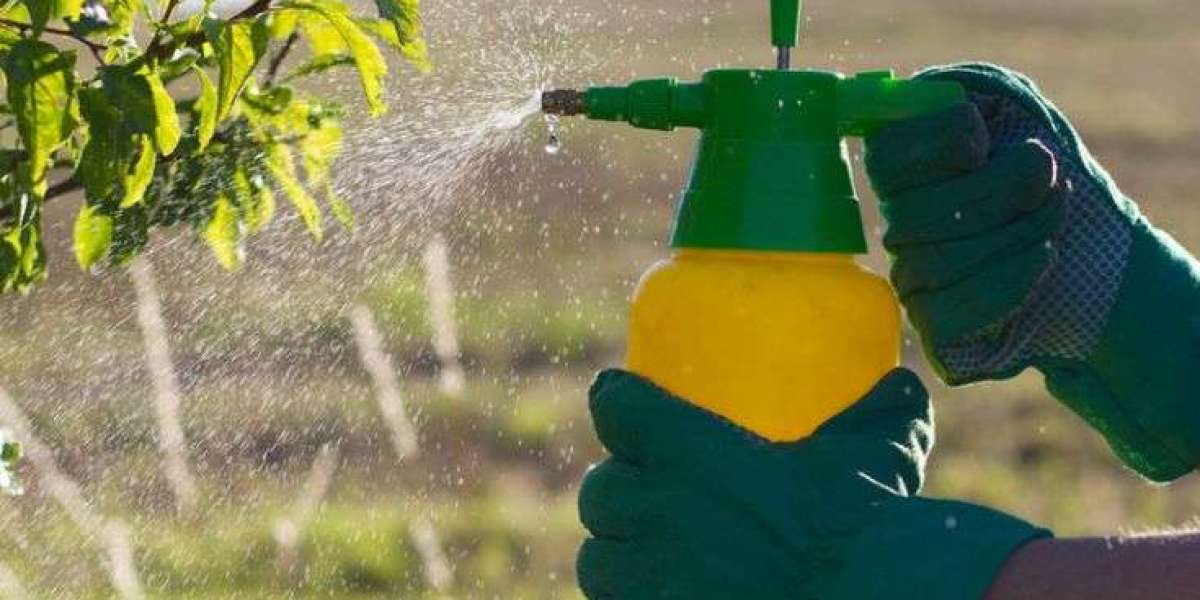Crop damage from insect pests continues to be one of the top reasons for yield loss across global agriculture. With climate shifts intensifying pest cycles and resistance to older chemicals rising, 2025 demands a smarter, more sustainable approach to insect control. Farmers now turn to advanced insecticides tailored for efficiency, safety, and targeted action.
By using updated tools such as the Agribegri app, farmers can access verified insecticide products, expert advice, and even smart farm machinery integration. Digital tools simplify complex decisions, such as what dosage to apply, when, and how often—essential for reducing pesticide load and maximizing effect.
Why Modern Farmers Must Rethink Pest Management
Insects cause over 30% of global crop losses every year, according to the FAO. As traditional chemical formulas lose effectiveness due to overuse and resistance buildup, farmers must transition to a more integrated pest management strategy.
These modern solutions focus on:
Target specificity: Reducing harm to beneficial insects and pollinators.
Eco-compatibility: Complying with global food safety and residue norms.
Precision agriculture, including optimized seed choice and AI-enabled irrigation, now works in tandem with smarter pesticide use. Insecticides are no longer blunt tools—they are precise instruments in the broader context of plant medicine.
Key Types of Insecticides to Know in 2025
Farmers today must not only choose an effective product, but understand how it works, what it targets, and what makes it sustainable. Below are four insecticides that represent the future of responsible pest management.
1. Chlorantraniliprole-Based Formulations
Chlorantraniliprole is a selective anthranilic diamide insecticide known for its low toxicity to non-target species.
Usage:
Best for vegetables, rice, and maize. Applied during early larval stages of leaf-eating pests.
Who should use:
Farmers in high pest-pressure zones, especially where resistance to pyrethroids is reported.
How it’s made:
Synthetic but designed to mimic naturally occurring substances in plants.
Benefits:
Long-lasting residual activity, safe for predators like ladybugs.
Non-benefits:
Higher cost per hectare; ineffective if applied late in the pest cycle.
2. Neem Oil-Based Bioinsecticides
Neem oil, derived from the Azadirachta indica tree, is a traditional yet evolving biopesticide with systemic and antifeedant properties.
Where to use:
Fruit crops, legumes, and greenhouse vegetables. Ideal for organic farms.
When to use:
At early infestation signs or as a preventative spray.
Who should use:
Small to medium farmers aiming for residue-free produce.
Benefits:
Biodegradable, disrupts pest hormone systems.
Non-benefits:
Requires frequent applications and sensitive to UV light.
3. Flubendiamide Insecticides
This phthalic acid diamide insecticide controls lepidopteran pests with a novel mode of action.
Usage:
Recommended for cotton, chili, and brinjal crops.
Application timing:
Spray at pest egg hatching to ensure full control of larvae.
Production:
Synthesized under strict regulatory approval frameworks.
Benefits:
Quick knockdown, long crop protection window.
Non-benefits:
Can be phytotoxic if overapplied; expensive for low-margin crops.
4. Pyriproxyfen-Based IGR (Insect Growth Regulator)
Pyriproxyfen mimics juvenile hormones in insects, preventing development into reproductive adults.
Where it works best:
Citrus, cotton, tea, and vegetables plagued by whiteflies and aphids.
Who benefits most:
Farmers using integrated pest management alongside traps and lures.
How it’s made:
Synthetic analog with targeted hormonal disruption.
Benefits:
Minimal toxicity to mammals and non-target insects.
Non-benefits:
Not suitable for immediate pest knockdown; works over time.
Each of these insecticides fits different use-cases. Smart integration with tools like sensors, decision support systems, and mobile agriculture platforms helps farmers match product to crop, pest, and stage.
The Role of Insecticides Within Plant Medicine
Plant medicine refers to biological, mechanical, and chemical interventions used to maintain crop health. Insecticides form a crucial part of this, especially when integrated with other farm inputs such as resistant seeds and improved farm machinery.
Key contributions include:
Reducing disease vectors such as aphids that spread viral infections.
Protecting pollination cycles in fruiting crops by sparing pollinators.
Creating predictable crop schedules by reducing pest-induced delays.
Modern insecticides align with the broader philosophy of precision farming, where inputs are minimal, timed, and highly effective.
How Digital Tools Elevate Pest Control Strategies
By 2025, most medium and large-scale farms will use decision support tools via agriculture apps to manage insecticide use. These tools combine local weather forecasts, pest alerts, and satellite imagery to recommend the ideal product and time.
Farmers benefit through:
Reduced wastage of chemicals.
Lower labor and application costs through smart sprayers.
Improved compliance with international Maximum Residue Limits (MRLs).
“An ounce of prevention is worth a pound of cure.” — Benjamin Franklin
This timeless wisdom holds true for crop protection. By anticipating pest problems and using the right tools at the right time, farmers preserve yield quality and field health.
Common Mistakes and Risks to Avoid with Insecticides
Even the best products fail without correct usage. Missteps often lead to resistance development or environmental harm.
Watch out for:
Over-reliance on one chemical group, accelerating resistance.
Spraying in high winds or direct sunlight, reducing efficacy.
Incorrect tank mix ratios, causing crop damage.
Best practices include:
Rotating between different chemical classes.
Using protective gear and correct nozzle types.
Applying during early morning or late evening hours.
Combining this approach with seed choice, soil health management, and calibrated farm machinery leads to a complete pest defense system.
Future Trends in Insect Control for 2025 and Beyond
Innovation in pest control is moving toward biologically driven and tech-assisted systems. Top developments expected to shape the future include:
RNAi-based insecticides: Target pest genes without harming other species.
Drone-based application: Reduces labor and increases precision, especially for large or uneven fields.
Nanoformulations: Deliver actives more efficiently with lower dosage.
In 2024, India saw a 19% increase in biopesticide adoption among mid-size farms, with neem-based products accounting for nearly 35% of that segment. Trends show a growing preference for safe, residue-free produce driven by both consumer demand and export regulations.








